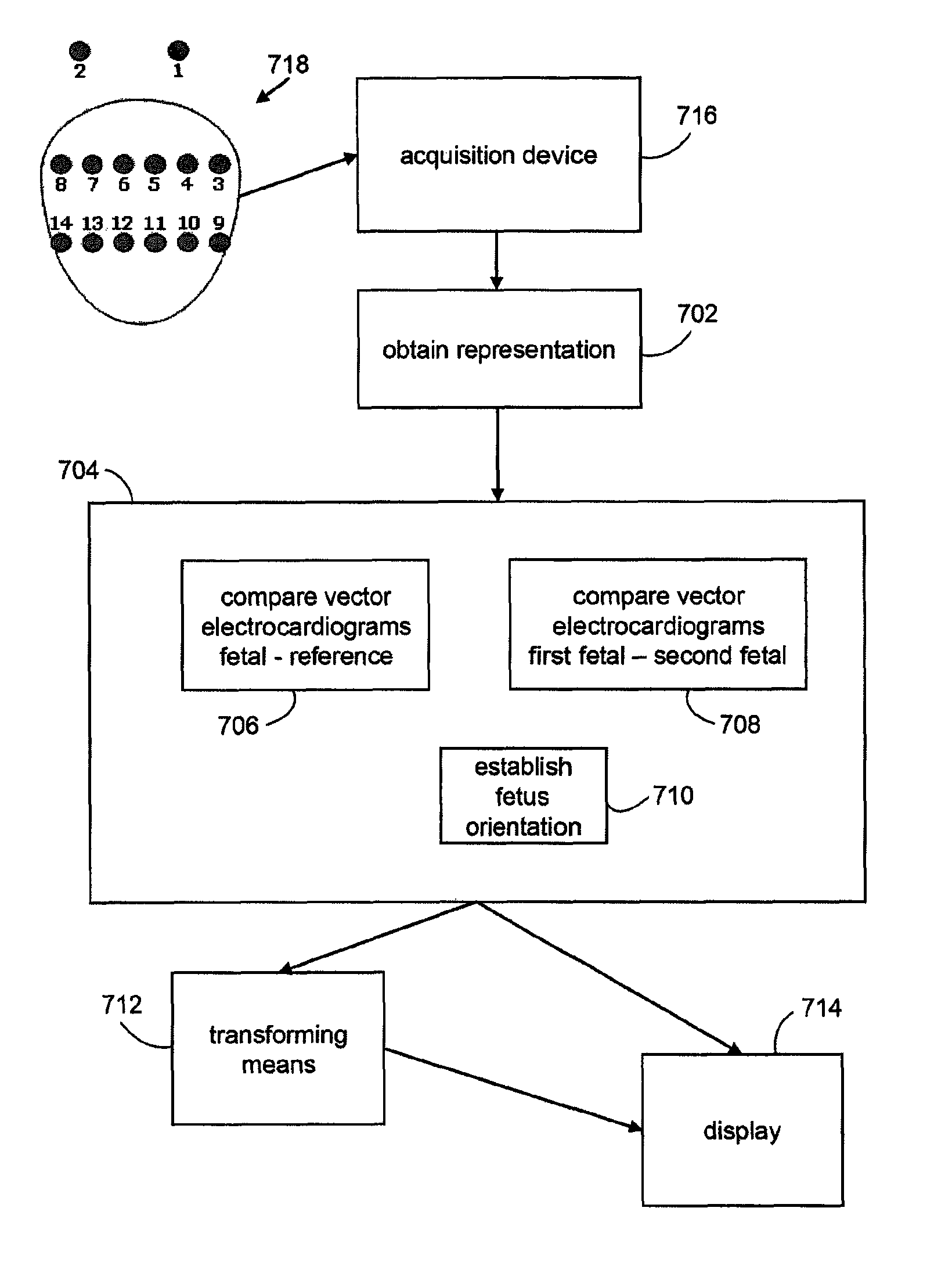Fetal monitoring
- Summary
- Abstract
- Description
- Claims
- Application Information
AI Technical Summary
Benefits of technology
Problems solved by technology
Method used
Image
Examples
Embodiment Construction
[0055]A major problem in modern obstetrics with respect to fetal monitoring is the limited possibilities to extract information from the fetus to assess its condition. The fetal heart rate is one of very few useful fetal signals that can be measured non-invasively and in many cases in clinical practice the only source of information available.
[0056]The fetal heart rate can be determined in several ways, based on two different physical principles. Electrical activity of the fetal heart can be determined by positioning electrodes either directly on the fetus or by positioning electrodes on the maternal abdomen. Positioning the electrodes directly on the fetus is an invasive technique and can only be performed when the fetal membranes have ruptured. Positioning the electrodes on the maternal abdomen is preferable since it is a non-invasive technique, which therefore can be applied in all stages of pregnancy. For example, in “Fetal Electrocardiogram Extraction by Blind Source Subspace S...
PUM
 Login to View More
Login to View More Abstract
Description
Claims
Application Information
 Login to View More
Login to View More - R&D
- Intellectual Property
- Life Sciences
- Materials
- Tech Scout
- Unparalleled Data Quality
- Higher Quality Content
- 60% Fewer Hallucinations
Browse by: Latest US Patents, China's latest patents, Technical Efficacy Thesaurus, Application Domain, Technology Topic, Popular Technical Reports.
© 2025 PatSnap. All rights reserved.Legal|Privacy policy|Modern Slavery Act Transparency Statement|Sitemap|About US| Contact US: help@patsnap.com



